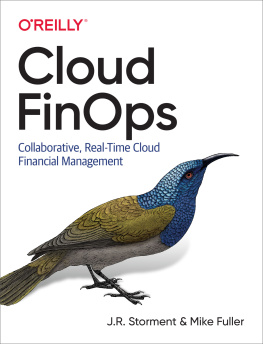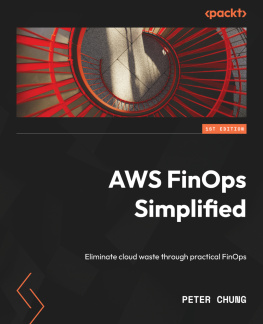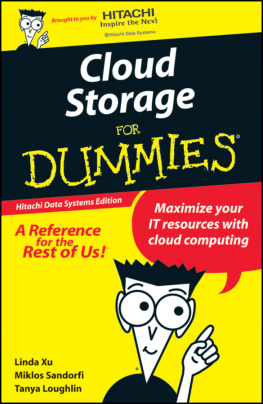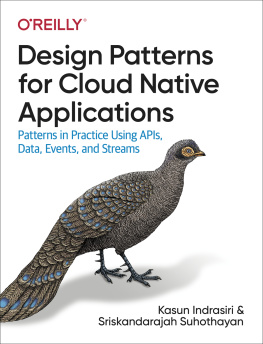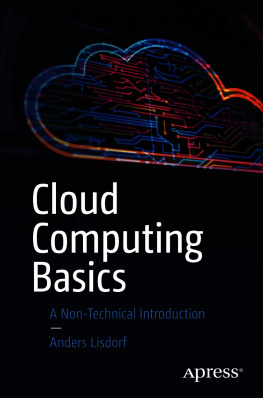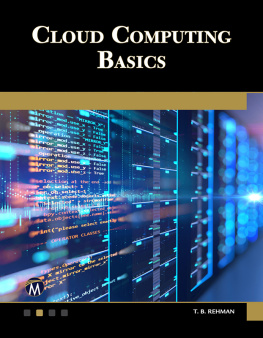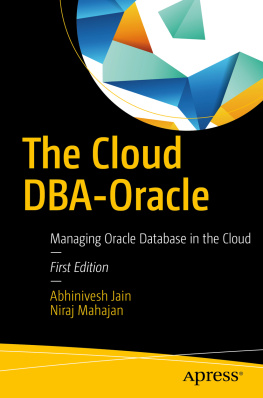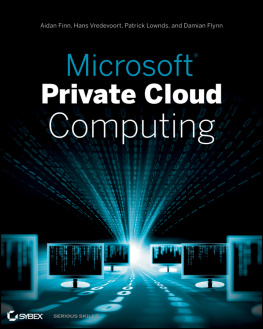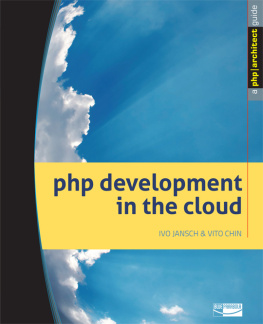Who dreamed of one day writing a book and waited patiently during two of the last three weekends of his life for us to finish this one. And who subsequently decided to retitle this book FinOps Poop Poo Book.
Preface
Over the years, weve heard the same stories over and over again. Engineering teams spend more than they need to on cloud, with little understanding of cost efficiency. Meanwhile, finance teams struggle to understand and keep up with what teams are spending. Then, to top it off, leadership doesnt have enough input into company spendingand sometimes doesnt even show a willingness to influence priorities.
Traditionally, procurement was largely in control of any material IT spend because they had to approve all large equipment purchases. As organizations move into the cloud, however, the pay-as-you-go modelalso known as the variable spend modelallows engineers to bypass this procurement approval process. When cloud spend reaches material levels, organizations are left to allocate, explain, and control these costs. With over 300,000 SKUs offered by cloud service providers, and thousands of new features introduced each year, cloud financial management is a problem that isnt going to solve itself.
We need a new cloud financial management operating model. Enter FinOps.
The success stories we typically hear at conferences or read in blogs focus on how organizations have migrated their technology. They play up the challenges their development and operations teams faced and finally overcame in heroic fashion. They talk about scale and data, and the newest service they used to solve a complex problem. Often overlooked, however, are the financial management practices that enabled these accomplishments. Throughout the years, weve seen many cloud stories fall into trouble due to ineffective cloud financial management.
During the last eight years of our respective careers, weve heard a consistent theme from practitioners and executives alike: theres a lack of FinOps education and knowledge available. Mike heard it while running cloud cost optimization for Atlassians massive cloud deployments. J.R. heard it while coaching the worlds largest cloud spenders as cofounder of Apptio Cloudabilitys cloud spend management platform.
Enterprises and tech unicorns alike struggle to evolve the way their teams work in the world of DevOps plus cloud. As they try to codify day-to-day best practices, they end up reinventing the same wheel, and they dont have a broad peer group to which they can turn.
But the wisdom is out there. The few enterprises further along the maturity curve (call them the FinOps Heroes) have broken down the silos. They get huge savings over what they would have paid in a pre-FinOps world. Meanwhile, their engineers are delivering innovation at faster speeds. Procurement has shifted to strategic sourcing and owning the relationship with the cloud provider. No longer removed from the process, the finance team is a proactive partner who has become technically enabled and is focusing on unit economics. And leadership is making intentional and frequent strategic choices among speed, quality, and cost.
Weve heard an oft-repeated demand for a resource from which we can all learn, along with a need for someone to both formally define FinOps and draw from the great FinOps practitioners in the industry. In short, we want to capture what it is that makes them successful and share it with the rest of the world.
Its why we formed the FinOps Foundation (http://finops.org). Its that organizations practitioners who have fueled the best practices well cover in this book. All the examples we describe have been created out of their feedback. Weve also woven in quotes from them to help connect the content with real-life thoughts and opinions on FinOps.
Who Should Read This Book
Anyone working in engineering, finance, procurement, product ownership, or leadership in a company runningor aspiring to runin the public cloud will benefit from this book. As an organization understands the personas in FinOps, it can map them to relevant teams across the business.
Engineers and operations teams are most likely not used to thinking about costs as a day-to-day concern. In the old precloud days, they worried about performance. Constrained by hardware procurement and unable to get more servers whenever they needed them, they had to hoard resources or plan ahead. Capacity planning was done months, if not years, in advance. Now, in the cloud, they can throw company dollars at the problem whenever extra capacity is required. But that adds a new dimension to the work. They also have to think about the cost of their infrastructure choices and its impact on the business. At first, this feels foreign and at odds with the primary focus of shipping features. Then they quickly realize that cost is just another efficiency metric they can tune to positively impact the business.

